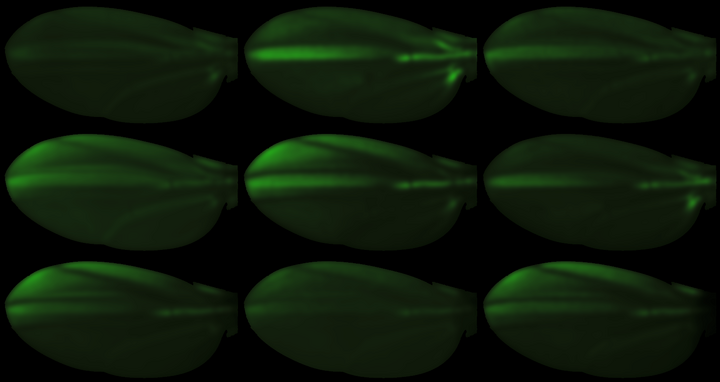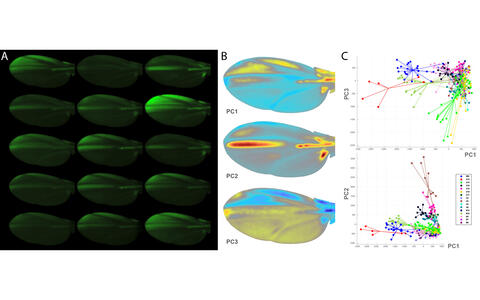Cracking the code of genetic enhancers
The Human Frontier Science Program (HFSP) has provided 900,000 US dollars in funding for a project that uses machine learning, high-throughput methods, and automated image recognition to shed light on the function of DNA sequences known as enhancers.
The project is being led by Professor Nicolas Gompel of Ludwig-Maximilians-Universität München (LMU) and involves the collaboration of Dr. Stephan Preibisch from the Berlin Institute of Medical Systems Biology (BIMSB) at the Max Delbrück Center for Molecular Medicine (MDC), and Prof. Remo Rohs from the University of Southern California (USC) in Los Angeles.
Wing spots reveal enhancer functions
The researchers are working to decipher the code for the basic functions of these DNA enhancer regions so that they can eventually “program” their own artificial enhancers.
Enhancer regions increase the likelihood that transcription of a particular gene will occur – but quite how they do this is largely unknown. The researchers are focusing on the so-called spot enhancer, which acts on the yellow gene and influences pigmentation patterns on the wings of fruit flies.
The gene activity in wings of different Drosophila flies with different modified enhancers is recorded systematically (A) and forms the basis for subsequent statistical analysis. The result: activity patterns consist of "Principal Components" (B) involving different statistical clusters (C).
As part of the project, BIMSB researcher Stephan Preibisch will place thousands of wings of genetically modified Drosophila flies under the microscopes and produce automated scans, which he will then analyze and classify with the help of machine learning. These flies come from the laboratory of evolutionary biologist Nicolas Gompel, who breeds the insects while systematically changing the spot sequence of their DNA.
This data will then be fed into Remo Rohs’ mathematical model, which uses bioinformatic methods to reveal how DNA and proteins interact – taking into account the three-dimensional structure of DNA – to influence gene activity. Together, the team is developing artificial intelligence that can combine the differences in wing pigmentation with systematic changes made to the DNA and thus make predictions about the properties of synthetic genetic enhancers.
The Human Frontier Science Program
The Human Frontier Science Program (HFSP) is an international funding program aimed at advancing interdisciplinary basic research. Its grants are highly sought after. On average, only three percent of the grant applications submitted each year make it through the rigorous selection program to receive funding – in 2018, 30 projects were selected from 771 applications.






